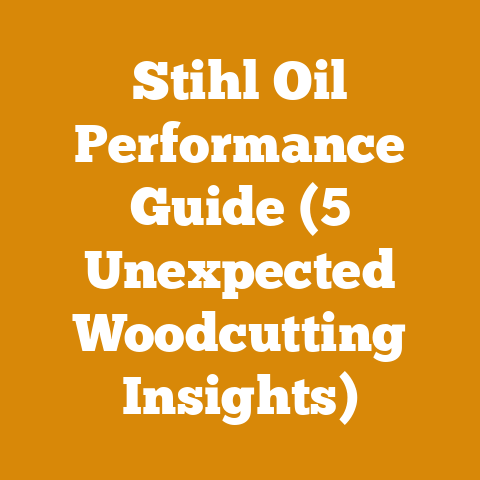Can You Burn Corn in a Pellet Stove? (5 Pro Tips for Efficient Heating)
Can You Burn Corn in a Pellet Stove? (5 Pro Tips for Efficient Heating)
The biting wind howled outside, rattling the windows of my old farmhouse. I was staring at the thermostat, watching the temperature creep downward despite the valiant efforts of my aging oil furnace. Winter had arrived with a vengeance, and my heating bill was already looking like a monster. Like many people, I began searching for alternatives. My neighbor, a seasoned farmer, casually mentioned burning corn in his pellet stove. The idea seemed both intriguing and…well, a little crazy. Could I really swap wood pellets for corn? Would it actually save me money? And more importantly, would my pellet stove even survive the experiment?
Corn in a Pellet Stove: A Viable Alternative?
Before we get ahead of ourselves, let’s address the elephant in the room: Can you actually burn corn in a pellet stove? The short answer is yes, sometimes. Many pellet stoves are designed to handle a variety of biomass fuels, including corn. However, it’s not a universal “yes.”
Here’s the catch:
- Stove Compatibility: Not all pellet stoves are created equal. Some are specifically designed for multi-fuel use, while others are strictly for wood pellets. Check your stove’s manual or contact the manufacturer to confirm if it’s corn-compatible. Using corn in a stove not designed for it can lead to malfunctions, damage, and even void your warranty.
- Corn Quality: The quality of the corn you burn matters immensely. It needs to be clean, dry, and free of debris like stalks, husks, and foreign objects. Dirty or wet corn will burn poorly, produce excessive ash, and potentially clog your stove.
- Proper Adjustment: Even if your stove is corn-compatible, you’ll likely need to adjust the settings to optimize the burn. This includes adjusting the feed rate and air intake to ensure proper combustion.
My Initial Hesitations and Research
I remember my initial skepticism. I’d spent years splitting firewood, wrestling with moisture meters, and perfecting my stacking technique. The idea of simply pouring a bag of corn into my stove seemed almost…too easy. So, I did what any responsible homeowner would do: I dove into research.
I scoured online forums, read countless articles, and even consulted with a local pellet stove technician. What I discovered was a mixed bag of experiences. Some people swore by burning corn, praising its cost-effectiveness and heat output. Others warned of excessive ash, clinkers (hard, fused ash deposits), and potential stove damage.
The more I learned, the more I realized that successfully burning corn in a pellet stove was less about luck and more about understanding the nuances of the process.
The Pros and Cons of Burning Corn
Let’s weigh the advantages and disadvantages of using corn as a heating fuel:
Pros:
- Potential Cost Savings: This is the biggest draw for most people. In some regions, corn can be significantly cheaper than wood pellets, especially during harvest season. I’ll break down the cost comparison in detail later.
- High Heat Output: Corn has a relatively high BTU (British Thermal Unit) content compared to wood pellets. This means it can produce more heat per pound, potentially warming your home more efficiently.
- Renewable Resource: Corn is a renewable resource, grown annually. This makes it a more sustainable option than fossil fuels like oil or natural gas.
- Availability: Depending on your location, corn may be readily available, especially if you live in an agricultural area.
- Lower Carbon Footprint: Burning corn can be carbon neutral, as the carbon released during combustion is offset by the carbon absorbed by the corn plant during its growth.
Cons:
- Ash Production: Corn produces significantly more ash than wood pellets. This means you’ll need to clean your stove more frequently, potentially daily.
- Clinker Formation: Corn ash is prone to forming clinkers, which are hard, fused deposits that can clog your stove and hinder performance.
- Potential for Stove Damage: Burning corn in a stove not designed for it can lead to corrosion, warping, and other types of damage.
- Storage Requirements: Corn needs to be stored in a dry, pest-free environment to prevent spoilage.
- Availability Fluctuations: The price and availability of corn can fluctuate depending on weather conditions, crop yields, and market demand.
- Potential for Odor: Some people find the smell of burning corn to be unpleasant. I personally didn’t mind it, but it’s definitely something to consider.
- Foreign Material: Corn can contain foreign materials such as dirt, rocks, and weed seeds, which can damage the stove.
5 Pro Tips for Efficient Corn Burning
Okay, so you’ve decided to give corn a try. Here are five essential tips to maximize efficiency and minimize potential problems:
-
Choose the Right Corn:
- Kernel Size: Opt for smaller, uniform kernels. Larger kernels can be more difficult for the stove’s auger to feed consistently.
- Moisture Content: Aim for corn with a moisture content of 15% or less. Use a moisture meter to check. Wet corn will burn poorly and produce excessive smoke.
- Cleanliness: Invest in high-quality, cleaned corn. This will minimize ash production and prevent clinker formation. Avoid corn that contains stalks, husks, or other debris.
- Test Batch: Before buying a large quantity, purchase a small batch of corn to test in your stove. This will allow you to fine-tune the settings and assess the corn’s burning characteristics.
-
Adjust Your Stove Settings:
-
Air Intake: Increase the air intake to provide more oxygen for combustion. Corn requires more air than wood pellets.
- Feed Rate: Reduce the feed rate to prevent overfeeding. Corn burns hotter than wood pellets, so you’ll need less fuel to maintain the same heat output.
- Burn Pot Cleaning: Clean the burn pot frequently, ideally daily. This will prevent ash buildup and ensure proper airflow.
- Experiment: Don’t be afraid to experiment with different settings to find the optimal combination for your stove and corn. Keep a log of your adjustments and their effects on performance.
-
Clean Your Stove Regularly:
-
Ash Removal: Empty the ash pan frequently, at least every other day. Corn produces significantly more ash than wood pellets, so regular cleaning is crucial.
- Burn Pot Scraping: Scrape the burn pot daily to remove any clinkers or ash buildup. A specialized burn pot scraper can make this task easier.
- Vent Cleaning: Inspect and clean the venting system regularly, at least once a month. Ash buildup in the venting can reduce airflow and increase the risk of chimney fires.
- Professional Inspection: Schedule a professional inspection and cleaning of your stove annually. This will ensure that all components are functioning properly and that any potential problems are identified early.
-
Proper Corn Storage:
-
Dry Environment: Store corn in a dry, well-ventilated area to prevent mold and spoilage.
- Pest Control: Protect corn from rodents and insects. Use sealed containers or bins to prevent infestation.
- Elevated Storage: Store corn off the ground to prevent moisture absorption.
- Rotation: Rotate your corn supply to use the oldest corn first. This will prevent spoilage and ensure that you’re burning the driest corn.
-
Monitor Stove Performance:
-
Visual Inspection: Regularly inspect the flame pattern. A healthy flame should be bright yellow and relatively clean. A smoky or orange flame indicates incomplete combustion.
- Temperature Monitoring: Monitor the stove’s temperature to ensure it’s operating within the recommended range.
- Ash Analysis: Examine the ash for signs of clinkers or unburned corn. This can indicate that the stove settings need adjustment.
- Carbon Monoxide Detection: Install a carbon monoxide detector near your stove and check it regularly. Carbon monoxide is a colorless, odorless gas that can be deadly.
Cost Analysis: Corn vs. Wood Pellets vs. Firewood
Now for the big question: Will burning corn actually save you money? To answer this, we need to compare the costs of corn, wood pellets, and firewood. This is where my experience in budgeting for wood processing projects comes in handy.
Factors Affecting Costs:
Before we dive into the numbers, it’s crucial to acknowledge the variable factors that can significantly impact fuel costs:
- Location: Fuel prices vary widely depending on your geographic location. Areas with abundant corn production will likely have lower corn prices. Regions with established wood pellet industries may have more competitive pellet prices.
- Seasonality: Fuel prices tend to fluctuate seasonally. Corn prices are typically lower during and after harvest season. Wood pellet prices may increase during the winter months when demand is highest.
- Supplier: Prices can vary significantly between different suppliers. Shop around and compare prices from multiple sources.
- Quantity: Buying in bulk typically results in lower prices per unit.
- Fuel Quality: Higher-quality fuels, such as cleaned corn or premium wood pellets, may cost more but offer better performance and reduced maintenance.
- BTU Content: The BTU content of the fuel directly impacts how much heat it produces. A fuel with a higher BTU content will require less fuel to generate the same amount of heat.
Cost Breakdown:
To make a fair comparison, we need to consider the following costs:
- Fuel Purchase Price: The cost per ton or bushel of corn, wood pellets, or cord of firewood.
- Delivery Costs: The cost of transporting the fuel to your home.
- Storage Costs: The cost of storing the fuel, including any necessary containers or structures.
- Maintenance Costs: The cost of maintaining your stove, including cleaning supplies, replacement parts, and professional service.
- Labor Costs: The cost of your time spent handling the fuel, cleaning the stove, and performing maintenance.
Sample Cost Comparison (Illustrative):
Let’s assume the following prices (these are just examples and will vary based on your location):
- Corn: \$250 per ton (approximately \$7 per bushel)
- Wood Pellets: \$300 per ton
- Firewood: \$200 per cord (seasoned hardwood)
Let’s also assume the following BTU content:
- Corn: 8,000 BTU per pound
- Wood Pellets: 8,500 BTU per pound
- Firewood: 20 million BTU per cord (approximately)
Calculations:
To compare the costs on an equal BTU basis, we need to calculate the cost per million BTU:
- Corn: (\$250 / 2000 lbs) / (8,000 BTU/lb) * 1,000,000 BTU = \$15.63 per million BTU
- Wood Pellets: (\$300 / 2000 lbs) / (8,500 BTU/lb) * 1,000,000 BTU = \$17.65 per million BTU
- Firewood: \$200 / 20,000,000 BTU = \$10.00 per million BTU
Analysis:
Based on these sample prices and BTU values, firewood appears to be the cheapest option, followed by corn, and then wood pellets. However, this analysis doesn’t account for all the factors mentioned earlier.
The Hidden Costs:
Remember, the initial purchase price is only part of the equation. We also need to consider the hidden costs:
- Ash Disposal: You may need to pay for ash disposal services, especially if you’re burning corn.
- Stove Damage: The risk of stove damage is higher with corn, potentially leading to costly repairs.
- Labor: Firewood requires significant labor for splitting, stacking, and loading. Corn and wood pellets are much easier to handle.
- Storage Space: Firewood requires a large storage space, which may not be available to everyone.
- Equipment Costs: If you’re harvesting your own firewood, you’ll need to factor in the costs of a chainsaw, splitter, and other equipment. I know this all too well from my own logging experiences!
My Experience with Firewood Costs:
I’ve spent countless hours felling trees, bucking logs, and splitting firewood. I can tell you firsthand that the “free firewood” myth is just that – a myth. Even if you have access to free wood, the costs quickly add up.
Consider the following:
- Chainsaw: A decent chainsaw will set you back at least \$300, and that’s before you factor in maintenance, fuel, and bar oil. I’ve learned that a well-maintained chainsaw is crucial for efficiency and safety.
- Splitting Maul or Hydraulic Splitter: Splitting wood by hand is a back-breaking task. A hydraulic splitter can save you time and effort, but it’s a significant investment (ranging from \$1,000 to \$3,000).
- Truck or Trailer: You’ll need a way to transport the firewood. This could involve renting a truck or trailer, which adds to the cost.
- Time: Don’t underestimate the value of your time. Harvesting and processing firewood is a time-consuming process.
A Case Study: Budgeting for a Firewood Project
Let’s say I wanted to cut and process 5 cords of firewood. Here’s a rough estimate of the costs involved:
- Chainsaw Fuel and Oil: \$50
- Chainsaw Maintenance: \$50
- Truck Rental: \$100
- Hydraulic Splitter Rental (2 days): \$200
- Permits (if required): \$50
- My Labor (50 hours x \$20/hour): \$1000 (Opportunity cost – what I could be earning doing something else)
Total Cost: \$1450
Cost per Cord: \$290
In this scenario, even “free” firewood ends up costing me \$290 per cord when I factor in all the expenses. This illustrates the importance of considering all costs, not just the initial price of the fuel.
Back to Corn:
While corn may appear cheaper than wood pellets on a BTU basis, the increased maintenance and potential for stove damage can offset those savings. It’s essential to carefully weigh all the factors before making a decision.
Pro Tip: Blending Corn and Wood Pellets
One strategy that many people find successful is blending corn and wood pellets. This can help to reduce ash production and clinker formation while still taking advantage of the lower cost of corn.
The ideal blend ratio will depend on your stove and the quality of the corn. Start with a 50/50 blend and adjust as needed. Monitor the stove’s performance closely and make adjustments to the settings as necessary.
Final Thoughts and Actionable Takeaways
So, can you burn corn in a pellet stove? The answer is a qualified yes. It can be a cost-effective heating solution, but it’s not without its challenges. It’s important to do your homework and ensure your stove is compatible.
Here are some actionable takeaways to help you decide if burning corn is right for you:
- Consult Your Stove Manual: This is the most important step. Check your stove’s manual or contact the manufacturer to confirm if it’s corn-compatible.
- Research Local Prices: Compare the prices of corn, wood pellets, and firewood in your area. Factor in all the costs, including delivery, storage, and maintenance.
- Start Small: Purchase a small quantity of corn to test in your stove. Experiment with different settings and monitor the stove’s performance closely.
- Prioritize Stove Maintenance: Clean your stove regularly and schedule a professional inspection annually.
- Consider Blending: Experiment with blending corn and wood pellets to optimize performance and reduce ash production.
- Safety First: Install a carbon monoxide detector near your stove and check it regularly.
Ultimately, the decision of whether or not to burn corn in your pellet stove is a personal one. By carefully weighing the pros and cons, considering all the costs, and following these pro tips, you can make an informed decision that’s right for your home and your budget. Happy heating!






